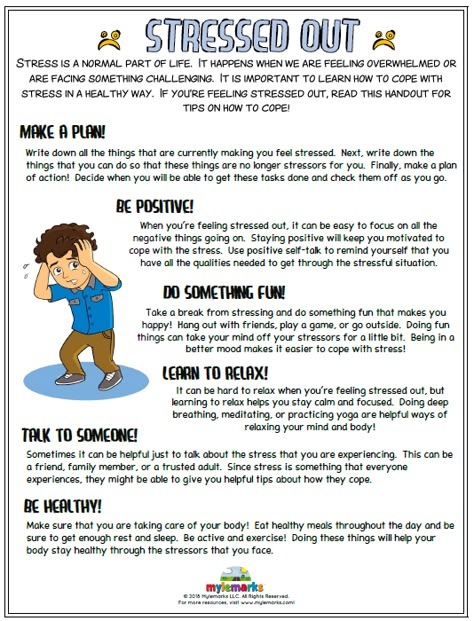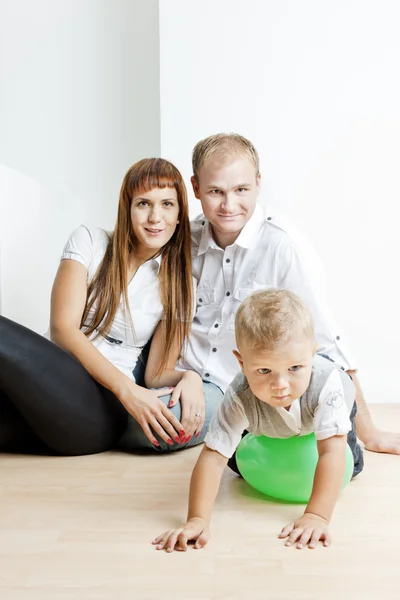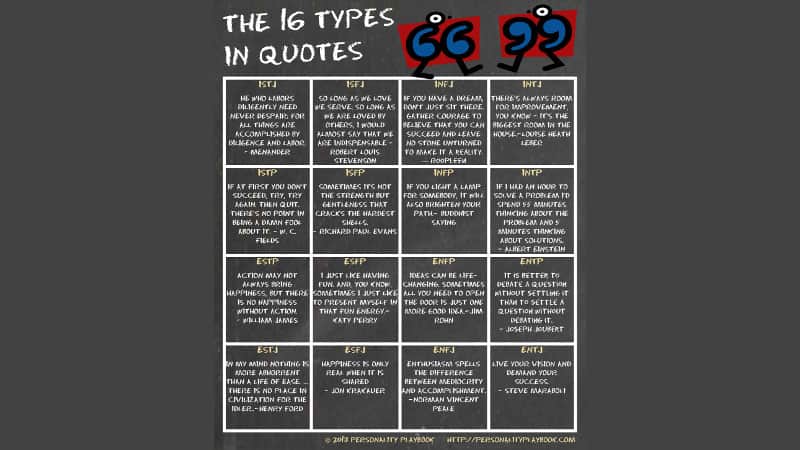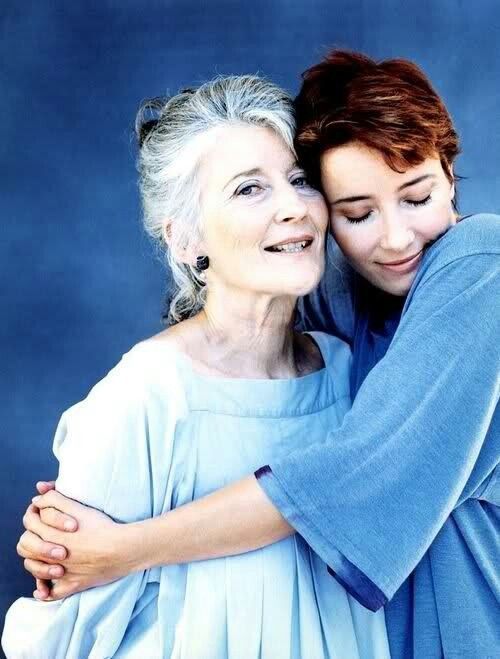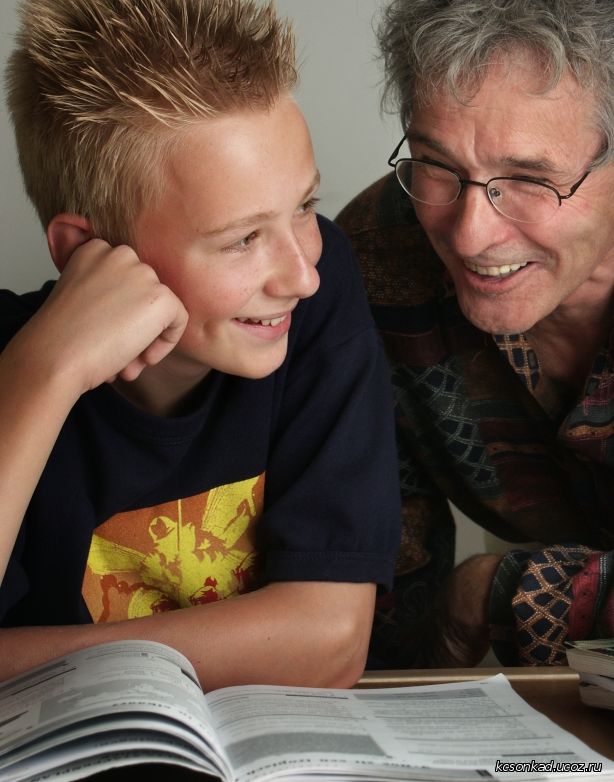Yoga for grief relief
Yoga for Grief Relief – Finding your new self after loss
The practice I have developed for transforming grief from a painful experience into a conscious source of self-knowledge is a six-part sequence: breathing exercises, body movements, cleansing techniques, relaxation, mental reprogramming, and meditation.
We all need coping mechanisms, we all need treatments that soothe our restless minds, and our aching bodies. But above all, we need the knowledge that can be gained simply by basking in one's inner silence.
What this work offers is not a "retreat" from grief, nor a "release" from grief, but simply some relief from grief.
Previous
Next
About Yoga for Grief Relief
Yoga for Grief Relief is a somatic psychotherapeutic process using Yoga techniques as somatic tools to address the physical, mental and spiritual symptoms of grief towards self re-identification following an important loss.
Symbolically, the windmill serves as an analogy for the process of transformation of grief into a new identity. The forces of the unknown—the wind—power the mechanisms of the windmill, just as the mystery of loss creates a churning in the depths of our own selves. As the windmill utilizes the sometimes wild and destructive force of wind energy to mechanically transform hard grains into edible flour, the techniques in this sadhana can transform our Selves, left vacant by loss but open to receiving the knowledge that exists within us. Just as the grain being pulverized results in a finer quality of flour, the yoga exercises shared here operate at a neurochemical level, improving our mood and strengthening our resolve in the face of insurmountable loss.
How we work together
Individual Sessions
Individual sessions offer a space for a more accurate self-reflection and an opportunity to gain a deeper understanding of the grieving process itself as it applies to each case.
Skype Session
Skype sessions are individual 60 or 90 minute sessions conducted through Skype, a software application that enables free video and voice one-to-one or group calls, instant messaging and file sharing with people from all over the world.
Retreats
Retreats offer individuals a safe environment to explore and share personal grief experience in a group context by establishing a ‘sacred container of confidentiality’ and clear rules of interaction amongst the attendees. The course work alternates general grief theory with experiential YGR individual and group work techniques that can help individuals move through the pain of loss to find release and relief. In addition to the 2 hour daily morning practices of the full YGR Sadhana (routine), specific techniques are added and their results explored throughout the day so each participant can fully benefit from the program.
Group Series
Sharing one’s own grief in a group that meets frequently offers crucial information about one’s personal ways of grieving as compared with others; combats the frequent ‘social isolation’ grievers suffer from, and enhances the educational aspects of grief counseling. Those going through individual sessions, often choose to participate in this series to gain exposure to the full program.
Those going through individual sessions, often choose to participate in this series to gain exposure to the full program.
"Losing a loved one to death pushes us into a series of feelings, beliefs, and behav- iors that we try strongly to resist. These are painful and scary, and we fear that these experiences of our brokenness may never end. Antonio Sausys has taken [my] ‘tasks of mourning’ and shows how the simple practices of yoga can help us fulfill these tasks and bring us the re-integration and relief that we seek. Practicing the wisdom of this ancient mind-body discipline can help the mourner begin to integrate [his or her] experiences after loss and to re-establish a sense of wholeness."
J. William Worden, PhD, ABPPauthor of Grief Counseling and Grief Therapy and Children and Grief: When a Parent Dies
“I welcome this type of Practical application of Yoga to one of the most important problems that people face in their life grief is an important part of the human life and yoga has a lot to offer in its management I congratulate Shri Antonio Sausys on this venture and wish that more of us can learn these applications to daily life…”
Dr, Ananda Balayogi BhavananiPondichary, India
“With compassion and clarity, Antonio Sausys brings dignity to the grieving process as he guides you, step-by-step, through loss to transformation and rebirth.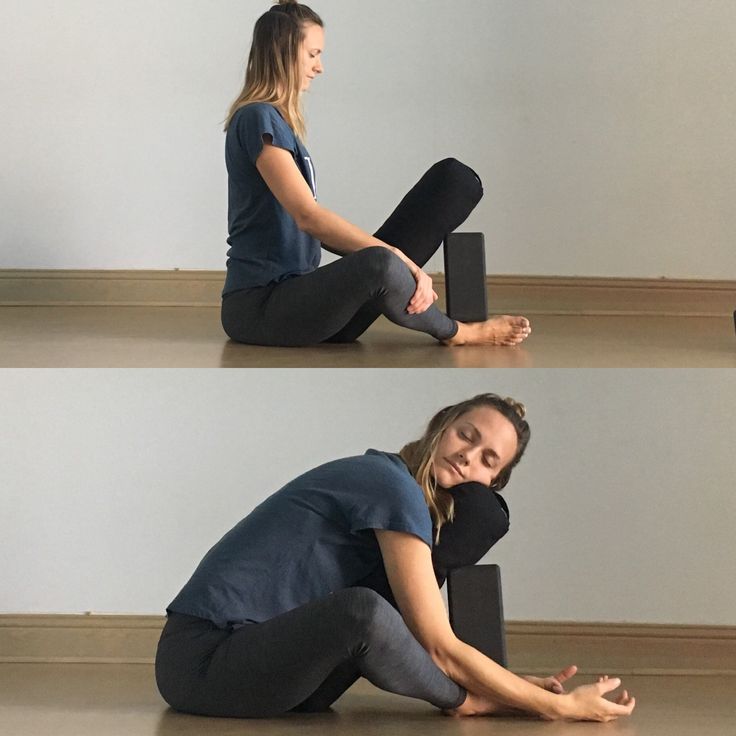 Herein lies an important road map for the difficult rite of passage that we all must face at some point in our lives.”
Herein lies an important road map for the difficult rite of passage that we all must face at some point in our lives.”
Anodea Judith, PhDauthor of Wheels of Life: Eastern Body, Western Mind
“A loving approach to transforming grief and loss. Antonio’s work is East-West wisdom at its finest.”
Larry Payne, PhDfounder of Samata International Yoga and Health Institute; coauthor of Yoga for Dummies and Yoga Rx and the Business of Teaching Yoga; and director at Yoga Therapy RxTM and Prime of Life YogaTM
“… Antonio has an enormous amount of experience, and his unique approach to Yoga practice includes focusing at least as much on the meaning of the poses and their relevance and usefulness in dealing with and enriching life, as to limiting the focus to the physical aspects of the poses alone . His skillful attention to issues individuals in a class may have, is manifested in his ability to attend to any modifications individuals may need while still focusing on the class as a whole His perspective in teaching and practice, also includes continuously focusing on the mind, body and spirit and the balance between them.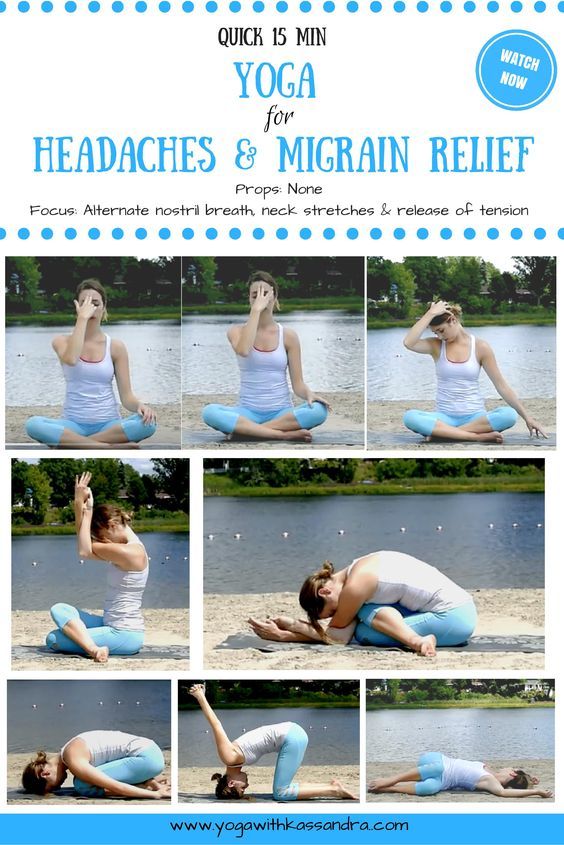 He is multitalented and seems to have endless energy. In addition to Yoga, he has training in Psychology and has, with a small group of others, founded and cultivated the popularity and awareness of Yoga Therapy."
He is multitalented and seems to have endless energy. In addition to Yoga, he has training in Psychology and has, with a small group of others, founded and cultivated the popularity and awareness of Yoga Therapy."
Dr. Ronnie Ranz, Mill Valley, CA
“… Antonio Sausys is a passionate, talented, creative and intuitive Yoga teacher.He is able to listen with both heart and mind, and combine techniques that are pertinent to the individual; their physical capabilities and emotional process. He is highly trained in combining the skills of traditional psychology and the practice of Yoga for healing and personal growth. Antonio is both competent aware and thus able to ‘hold space’ for the individual to be exactly where they are at, and provide safety and instill confidence. His phenomenal contribution to the healing arts field is creating an individual ‘Sadhana’(a daily practice routine) for each person. This requires addressing, in depth, postures and mental focus that fortify each person’s ability.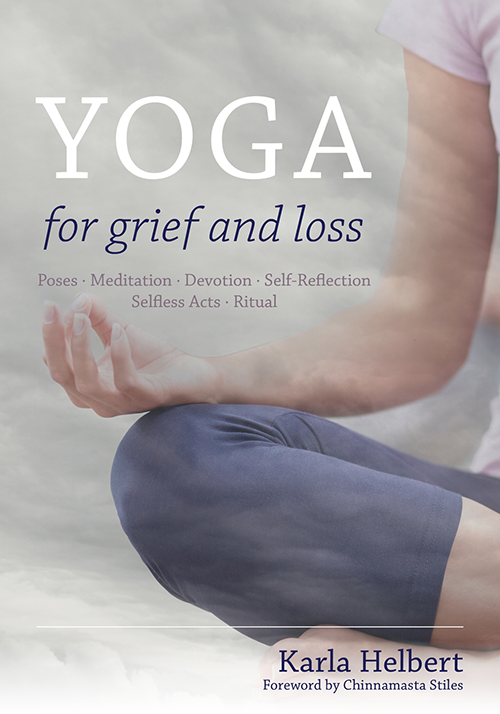 "
"
Lyn PrashantFounder and Creator of the Degriefing Process, San Francisco, CA
“I wanted to thank you for presenting the Grief Relief Workshop on Saturday. The gentleness and knowledge you exhibit and posess is crucial to understanding and living with grief. Perhaps the most important statement that you made for me is that there is no time limit and that the pain never “goes away.” I know this is true, but so few others are willing to acknowledge this fact. Why would I want to end the pain of losing my beautiful son? That is the exprerssion of my undying love for him…”
Lisa W. Novato, CA
“… I wanted to tell you thank you for your bright, present, strong, and funny presence teaching the ancient teachings of yoga. Your humble delivery let us all respect you but feel in control of our own experiences. It was a cool rainy Friday that I attended your class in the White Lotus Tent…unique. I was on the red carpet for a mat. And I’ve done the series that you gave on paper a few times since then…”
Ayden Bremner, Oakland, CA
“… Thanks for a wonderful class.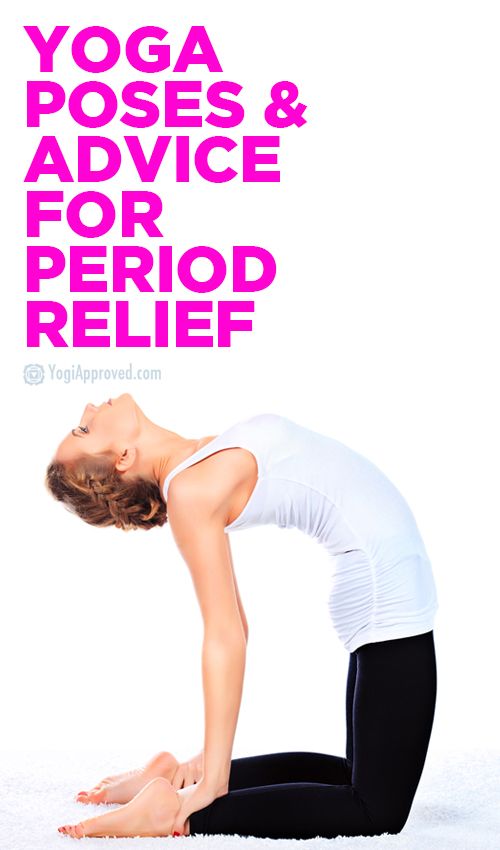 Your words and the exercises (especially the Windmill) had a profound/transformative impact on me I never expected. Realizations and questions are pouring in. It’s overwhelming, kind of mind blowing … I came to take a class that would help me undertsand the parents I work with but received new hope that I might find the Divine, that I might belong in this Universe and moreover matter or be loved – this is something I have anguished over most of my ife although I’ve learned to not think about it until a big loss tore me open a few months ago. Who would of thought the answer might be in my body after all these years of trailing around pondering, pondering, pondering, talking, asking, pleading, begging, imploring, immense amounts of dialog (with several psychologists!) and then years of silence? No answers, just my annoying blather going around and around. Your teaching method was clear, penetrating, very professional and accessible. (Which is very different from previous experiences I’ve had with yoga instructors … which is why I asked you for contacts — plus the mind-body-spirit connection never clicked before, astonishingly)…”
Your words and the exercises (especially the Windmill) had a profound/transformative impact on me I never expected. Realizations and questions are pouring in. It’s overwhelming, kind of mind blowing … I came to take a class that would help me undertsand the parents I work with but received new hope that I might find the Divine, that I might belong in this Universe and moreover matter or be loved – this is something I have anguished over most of my ife although I’ve learned to not think about it until a big loss tore me open a few months ago. Who would of thought the answer might be in my body after all these years of trailing around pondering, pondering, pondering, talking, asking, pleading, begging, imploring, immense amounts of dialog (with several psychologists!) and then years of silence? No answers, just my annoying blather going around and around. Your teaching method was clear, penetrating, very professional and accessible. (Which is very different from previous experiences I’ve had with yoga instructors … which is why I asked you for contacts — plus the mind-body-spirit connection never clicked before, astonishingly)…”
Odile ColeEsq.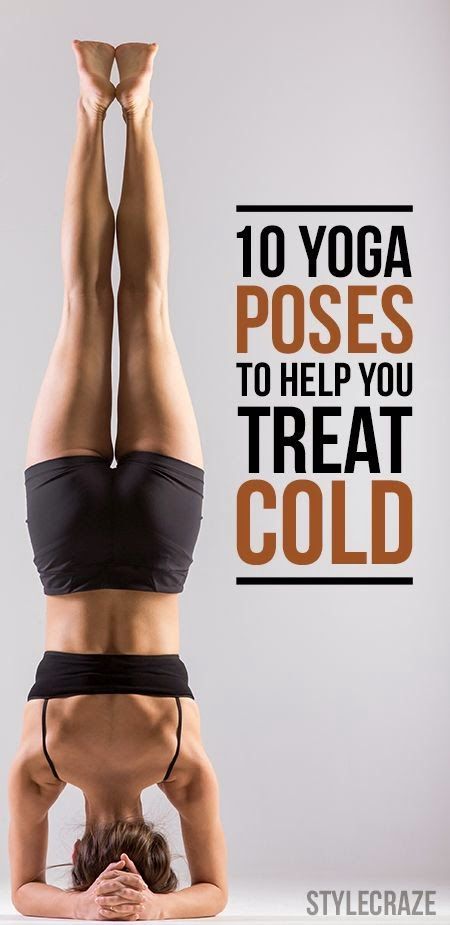 ; Menlo Park, CA
; Menlo Park, CA
"Also wanted to thank you for conducting such a wonderful class and being a vital part of the shifting experience over the past week. Your passion about yoga is self evident but yet you are sensitive to how students receive the information. And that makes you a very special teacher. I felt honored and blessed to have been part of a life changing experience with you."
Gene MeiergerdAnchorage, Alaska
“… Your voice came to my head and reminded me that if we stand on rubber we don’t discharge. So I took off my sandals and for the first time in my life I could actually FEEL the things you were talking about! and what a powerful experience it was!!! My body statred discharging so much, as if it was laughing – every cell was bursting with rolloing uncontrolled laughter of relief. layers and layers of mpressions and reactions surfaced and released to the ground like a waterfall."
Tal RavehPalo Alto, CA
Previous
Next
Calendar of events
Below is a list of upcoming seminars and events.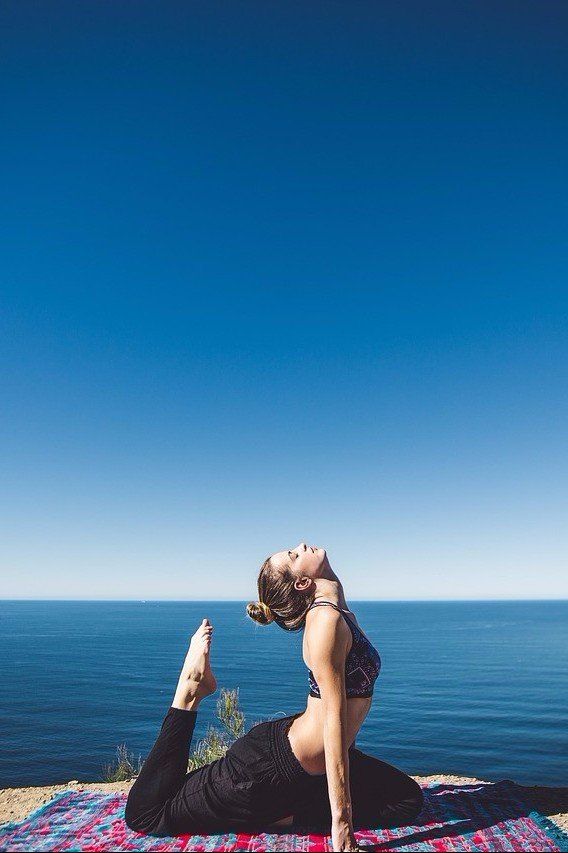 To learn more or to register visit the website provided for each location. You can also call me directly at 415.258.2830 to register for a seminar. Visit the Contact Me page if you’d like to request a speaker for your own training program or event.
To learn more or to register visit the website provided for each location. You can also call me directly at 415.258.2830 to register for a seminar. Visit the Contact Me page if you’d like to request a speaker for your own training program or event.
| June 16 - 19, 2022 | Yoga for Grief Relief Hybrid Retreat | Sivananda Ashram Bahamas |
| June 19 - 22, 2022 | Manifesting Your Full Potential | Sivananda Ashram Bahamas |
| August 5 - 7, 2022 | Yoga for Grief Relief Professional Training Level 1 - Module 1 | yogaforgriefrelief.com |
| October 7 - 9, 2022 | Yoga for Grief Relief Professional Training Level 1 - Module 2 | yogaforgriefrelief.com |
| December 2 - 4, 2022 | Yoga for Grief Relief Professional Training Level 1 - Module 3 | yogaforgriefrelief.com |
| December 9 - 11, 2022 | Yoga for Grief Relief for Yoga Therapists | innerpeaceyogatherapy.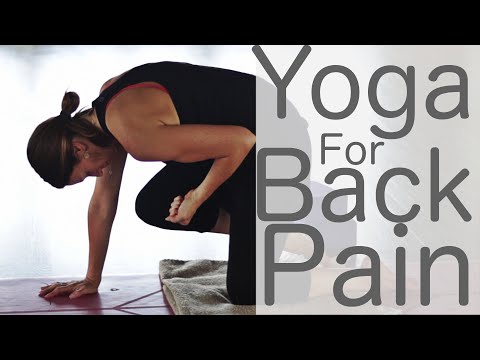 com
com |
Receive our newsletter
Affiliations
ADEC the Thanotology AssociationInternational Association of Yoga TherapistsBihar School of YogaIndian Yoga AssociationAfterTalkProfessional training
Yoga’s methods and concepts can be applied by any professional, regardless of credo or theoretical work frame. This training is suitable for yoga therapists as well as Health and mental health care professionals interested in adding Yogic techniques to their existing toolbox. If you are a professional and are interested in learning how to integrate Antonio’s work into your existing practice, you can learn more by clicking on the button below. You may also call or connect with Antonio via the contact form below.
More info on Professional Training
GRIEF In THE MEDIA
Grief is often not spoken about, yet it occurs permanently. Read about current grief issues
Read more
Payment
Pay for an individual session, a group series, a retreat or a professional training.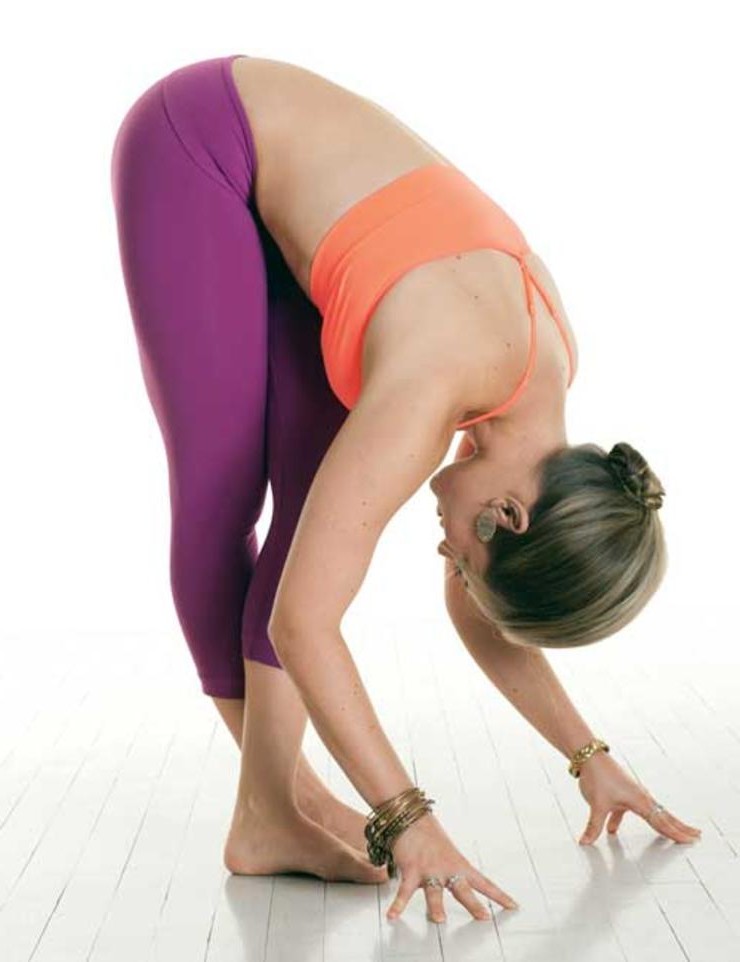
Pay now
Contact me
Be in touch, ask me a question or share your thoughts. You can also call me directly at 415.258.2830, or just send an email to [email protected].
Grief – Yoga for Grief Relief
Grief is the normal response to loss, all losses.
Grief takes place throughout the body, mind and spirit. The complex response is integrated in the limbic system, a series of interconnected structures deep within the brain.
After our initial shock, grief can initiate apathy, confusion, fear and intense sadness. Physically, we experience symptoms including low energy, increased physical pain (especially in the mid-back and the pectoral or chest muscles) and altered circadian or daily rhythms (specifically the breathing, circulatory and sleeping patterns).
Grief is a human reaction to any loss, even though it is more often acknowledged and understood when we grieve the loss of a dear one due to death.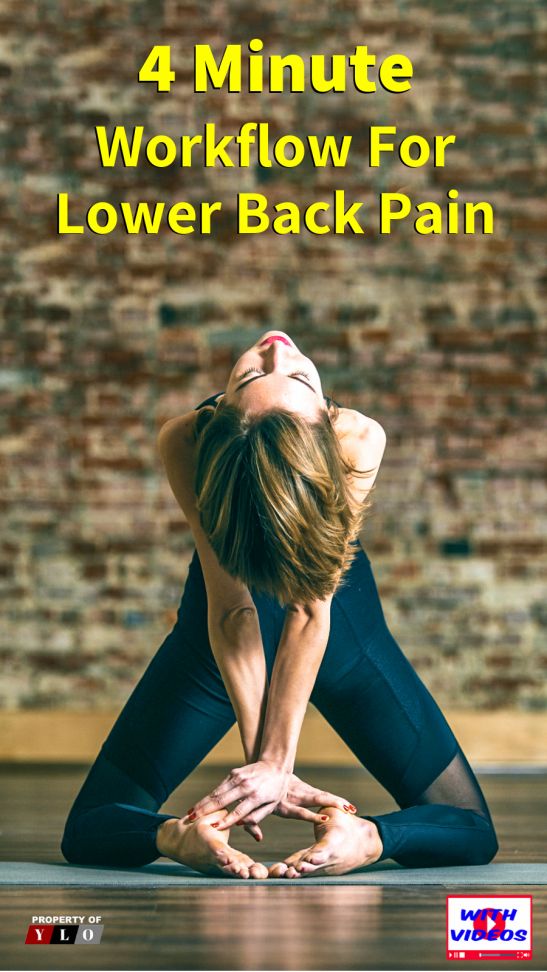 We may feel awkward grieving the loss of a ring. The truth is that the body-mind reacts with grief to the loss of many things or ideas: a pet, a job, a train, a dream or youth. If that ring is the one our dear grandfather left us and we’ve been wearing it at all of life’s important occasions, then it has even deeper meaning.
We may feel awkward grieving the loss of a ring. The truth is that the body-mind reacts with grief to the loss of many things or ideas: a pet, a job, a train, a dream or youth. If that ring is the one our dear grandfather left us and we’ve been wearing it at all of life’s important occasions, then it has even deeper meaning.
New grief triggers old; every time we face a new loss, we are confronted with the grief of previous loss, in our own life as well as the grief we carry as a family, community and even a species.
From the yogic view, all suffering comes from our attachment, and detachment is a necessary part of releasing the suffering of grief. There is a misconception that detachment means not loving, or a lack of caring. At its purest level, detachment is the acceptance that everything is impermanent: at one level or another, everything must end. It is one of the laws of the universe or Sat. When we accept this, understand it, we can access an even deeper sense of love without clinging.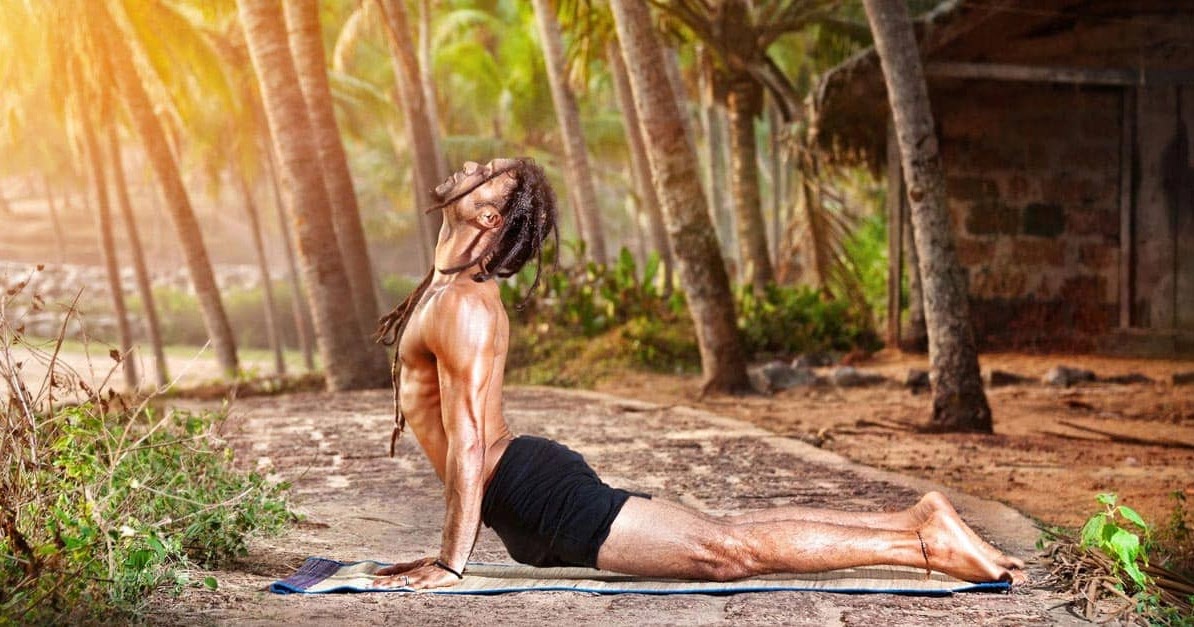 When we acknowledge that something will not be with us forever, we can enjoy it even more when it is available to us. In my experience, the process of eventual detachment is better accomplished in two stages. The first is detached attachment, when you are still bonded with the object, person or idea yet you know that it will disappear; secondly, true detachment occurs.
When we acknowledge that something will not be with us forever, we can enjoy it even more when it is available to us. In my experience, the process of eventual detachment is better accomplished in two stages. The first is detached attachment, when you are still bonded with the object, person or idea yet you know that it will disappear; secondly, true detachment occurs.
In the midst of the emotional shock and trauma of acute grief, it takes time for the understanding of this transformation to occur. There is not one set formula to overcome grief, it is generally accepted that we experience stages of grief. These include accepting the loss and working through the pain of grief to eventually reinvest the love energy.
We identify ourselves through the persons and things we are attached to, and when we lose them, we lose part of who we are. Yet, we continue being, only that in a way that is not known to us. The process of finding out through transforming grief is three folded and it involves:
- Taking care of the symptoms of grief, particularly the physical ones
- Facilitating the grieving process, by promoting the healthy transition through all four tasks of mourning
- Re-identifying, now based not on pre-learned survival mechanisms, but instead, on one’s true essence
What my program offers is not a “retreat” from grief, nor a “release” from grief, but simply some relief from grief.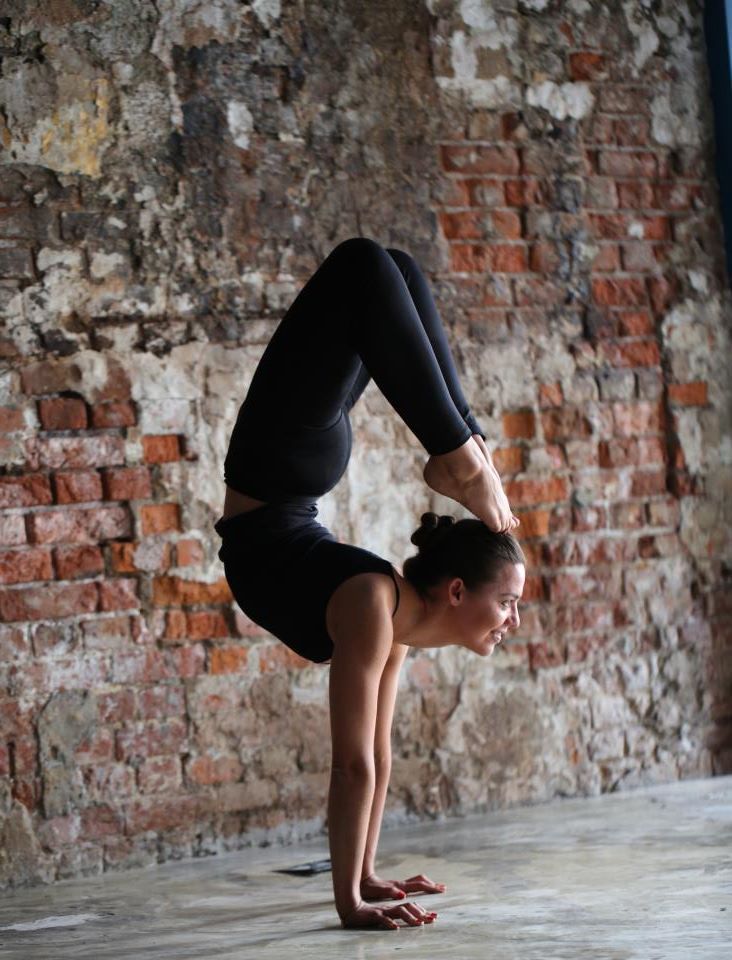 For that to happen, we must work. The sadhana I’ve developed offers a practice—the foundation for the work we must do—and along the way reap the benefits we are after.
For that to happen, we must work. The sadhana I’ve developed offers a practice—the foundation for the work we must do—and along the way reap the benefits we are after.
14 asanas that will help you find inner harmony ⭐ Fitron's blog
The popularity of yoga is explained by its great benefits for the body. Regular practice makes the body flexible and strong, and the mind calm and clear. But where to start classes in order to feel the first positive changes in mood and well-being? We talked with Anna Gubareva, an Iyengar yoga teacher with 10 years of experience, about which asanas a beginner should choose to relieve nervous tension and reduce stress.
Yoga classes help to work on oneself in three directions at once: physical, mental and spiritual. To feel harmony at all levels, it is not necessary to perform complex postures that require serious physical preparation. Try to do this simple set of asanas and listen to the sensations. Calmness will return to you, and the body will be filled with energy.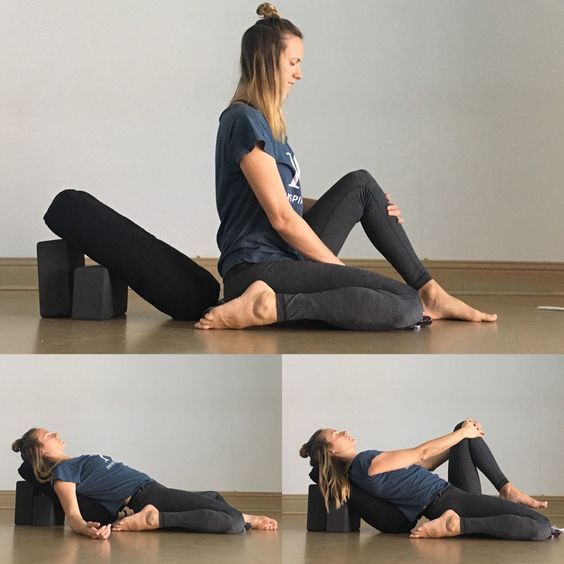
Tadasana - mountain pose
Stand up straight with your body weight evenly distributed between your feet. Straighten your legs and arms. Roll your shoulders back and push your shoulder blades forward. Stretch your arms down and the top of your head up. Look straight, breathe calmly. Stay in the pose for 30 seconds to 1 minute.
Tadasana is a posture in which we stand firmly and straight, like a mountain. As a rule, we do not attach importance to how we stand, and this is a big contribution to the feeling of confidence. Try to observe the right and left sides of the body in this asana. Strive for symmetry in the distribution of the load, and also do not fall forward or back. As a result of this alignment, lightness appears in the body, and the mind becomes lively and quick-witted.
Urdhva Hastasana - pose with arms extended upwards
From Tadasana, smoothly move into this asana: raise straight arms up, but make sure that the shoulder blades remain at the same level. Strongly stretch up your arms and crown. Hold the pose for 30 seconds.
Strongly stretch up your arms and crown. Hold the pose for 30 seconds.
Baddhanguliasana - fingers interlaced in a lock
Interlock your fingers and straighten your elbows. Stretch your arms above your head with your palms facing the ceiling. Strive upward with your whole body - from feet to palms. Stay in the pose for 15-20 seconds. Lower your arms, change the interlacing of your fingers, and repeat.
Paschima Baddhaanguliasana - fingers interlaced behind the back
Put your hands behind your back, clasp your fingers. Roll your shoulders back and push your shoulder blades forward. Straightening your arms, point them down, and pull your chest, neck and head up. Hold the pose for 15-20 seconds, then change the interlacing of the fingers and repeat.
Urdhva Baddha Hastasana - lock of hands over head
Grab your hands just above your elbows and lift them above your head. Pull your arms up as if you want to lift yourself off the floor.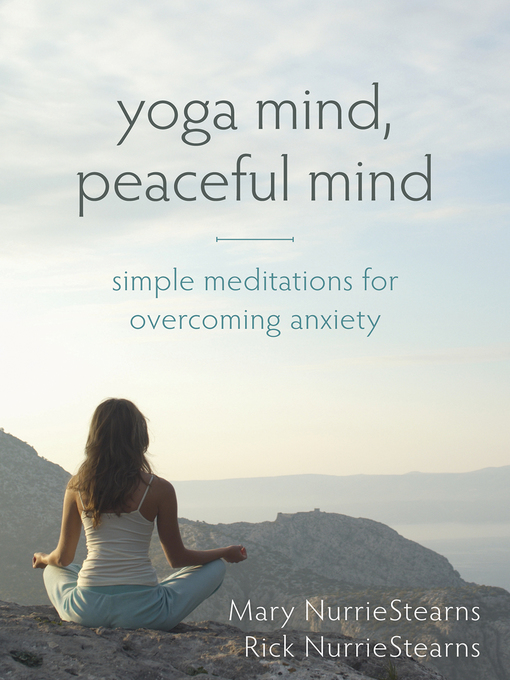 Lengthen and stretch your chest. Breathe deeply. Stay in the pose for 30 seconds, then switch hands and repeat.
Lengthen and stretch your chest. Breathe deeply. Stay in the pose for 30 seconds, then switch hands and repeat.
Asanas with different hand positions help to open the chest. Its volume increases, breathing becomes deeper, ventilation of the lungs improves. Such exercises are useful for the prevention of diseases of the respiratory system, and also bring relief from pain in the neck.
Utthita Trikonasana - Extended Triangle Pose
Place your feet wide apart (about 1.1-1.2 meters between your feet). Turn the right foot to the right, and turn the front edge of the left foot slightly inward. Stretch your arms out to the sides at chest level. Fully straighten your legs and arms. Place your right hand on your right ankle, and stretch your left hand up or down on your pelvis. Pressing the left foot to the floor, move the spine, chest and crown of the head to the right. Pressing the right palm to the ankle, raise the chest and left arm up. Hold the pose for 30 seconds.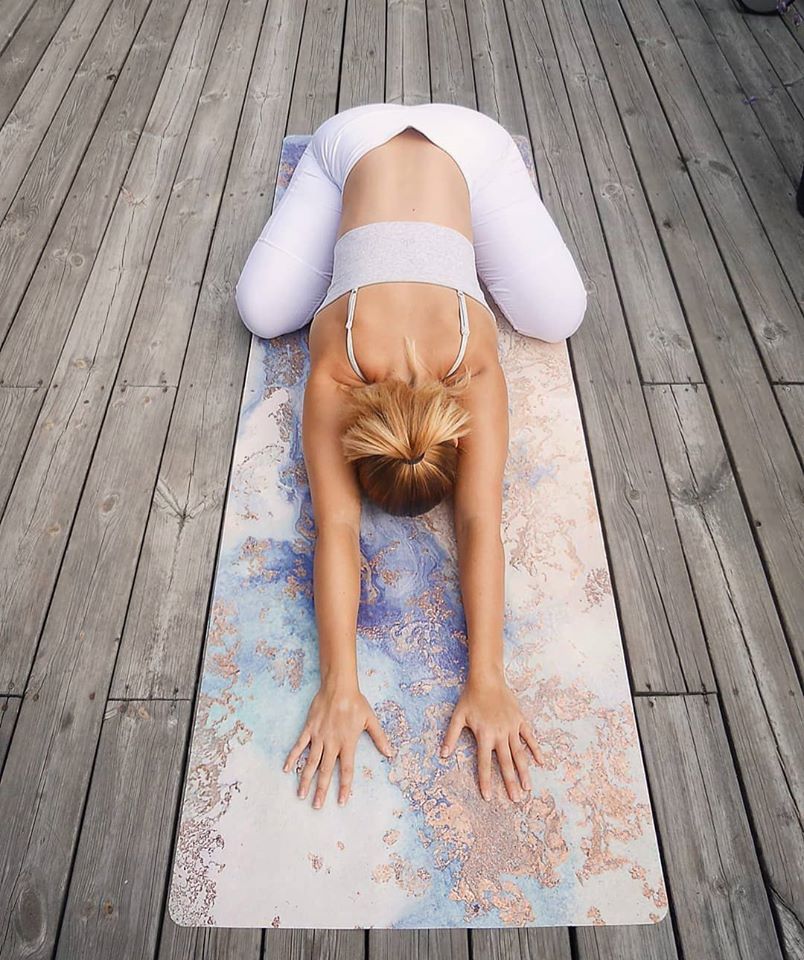 Breathe. Then get up and switch sides.
Breathe. Then get up and switch sides.
Utthita Parshva Konasana - Extended Side Angle Pose
Set your feet wide (approximately 1.2 meters). Turn the right foot to the right, and turn the front edge of the left foot slightly inward. Stretch your arms out to the sides at chest level. Bend the right leg at the knee to a right angle, hold the knee over the ankle. Lower your right hand to the floor. Keep your left foot pressed to the floor and your left leg straight. Place your left hand on the pelvis or stretch it over your head. Breathe. Lengthen the entire left side. Hold the pose for 20-30 seconds, then rise up and switch sides.
Ardha Uttanasana - Half Forward Stretch
Stand facing a chair, place your feet hip-width apart, feet parallel to each other. Lean forward, keeping your back and legs straight, and place your hands on a chair. Push off the chair and lift your chest. Stretch the clavicles to the sides and take the shoulders back to the pelvis.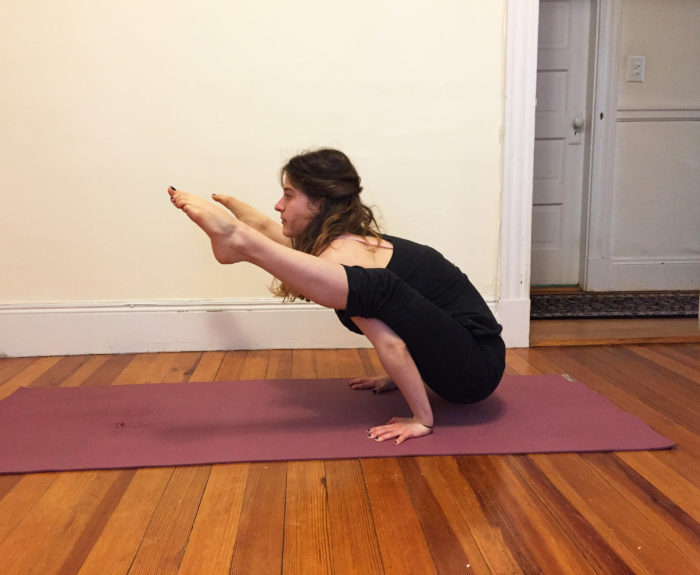 Press your feet to the floor, keep your knees straight. Arch your back in the thoracic region and stretch your torso forward. Stay in the pose for 1 minute. Breathe.
Press your feet to the floor, keep your knees straight. Arch your back in the thoracic region and stretch your torso forward. Stay in the pose for 1 minute. Breathe.
Parshvottonasana - Side Stretch Pose
From the previous pose, step your right foot forward so that the foot is under the chair, and with your left foot step back and turn your left foot slightly outward. Press your feet to the floor and pull your knees up. Move the left side of the pelvis forward and the right side of the pelvis back while maintaining balance. From the pelvis to the head, lengthen the torso and bend in the back. Stay in the pose for 30 seconds. Breathe. Then switch legs and repeat the pose on the other side.
Standing asanas tone the muscles of the legs, release from clamps in the legs and hip joints. When performed correctly, back pain, tension in the neck decrease, and the chest opens. The practice of these postures does not take up much space, but effectively strengthens the entire body. Aligning the body in such asanas calms the mind, relieves depression. If you want to increase the load, do standing asanas several times.
Aligning the body in such asanas calms the mind, relieves depression. If you want to increase the load, do standing asanas several times.
Bharavajasana (on a chair) - a pose dedicated to the sage Bharavaja
Sit with your right side against the back of a chair, place your feet and knees hip-width apart and press your feet to the floor. Turn your stomach and chest towards the back of the chair and grab the sides of the back of the chair with your hands. On the inhale, stretch from the pelvis to the top of the head, and on the exhale, twist to the right. Continue for about 1 minute and then switch sides.
Twisting is very beneficial for the health of the spine, and also improves the functioning of the digestive system. Repeat this twist 2-3 times in each direction to increase the positive effect.
Adho Mukha Svanasana - Downward Facing Dog Pose
Place your palms on the floor shoulder-width apart, take 2-3 steps back with your feet and place your feet hip-width apart.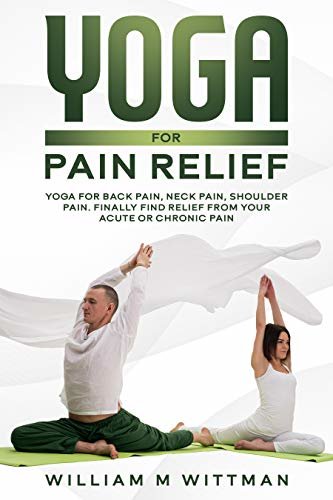 Press your palms firmly to the floor and lengthen your fingers. Straighten your arms and legs. Pressing your palms to the floor, pull your back back towards your legs. Try to lower your heels to the floor. Relax your stomach, neck and head. Breathe. Stay in the pose for 1-3 minutes.
Press your palms firmly to the floor and lengthen your fingers. Straighten your arms and legs. Pressing your palms to the floor, pull your back back towards your legs. Try to lower your heels to the floor. Relax your stomach, neck and head. Breathe. Stay in the pose for 1-3 minutes.
A long stay in this asana relieves fatigue and returns lost energy. The body is fully stretched, which improves blood circulation without straining the heart muscle. Asana rejuvenates brain cells.
Supta Padangushthasana - Reclining Big Toe Hold Pose
Use the strap for this asana first. Lie on your back, put a small blanket under your head. Throw a belt over the middle of your right foot and stretch your leg up, perpendicular to the floor. Stretch your left leg and press it firmly to the floor. Fully straighten your knees. Align the position of the pelvis. Breathe. Relax your stomach, throat, face and eyes. Do the pose from 30 seconds to 1 minute. Then switch legs. It is not recommended to perform the asana during menstruation.
It is not recommended to perform the asana during menstruation.
Leg extension while lying on the back relieves lower back pain and helps with swelling of the legs. If possible, repeat 2-3 times on each leg.
Halasana - Plow Pose
Prepare a place for the asana: place a chair behind you. Lie on your back and stretch your arms along the body. Pressing your hands to the floor, lift your legs and pelvis and move your legs behind your head. Place your toes on the chair. Interlock your fingers or leave your hands shoulder-width apart. Press your shoulders to the floor, but not your head. Straighten your knees and lift your hips and pelvis up away from your face. Breathe. Stay in the pose for 1-3 minutes. Then gradually lower your back, pelvis and legs to the floor. Refrain from performing inverted postures during menstruation, with hernias in the cervical spine and with inflammatory processes in the head area.
Halasana is one of the most important asanas. It has a beneficial effect on the health of all body systems. It is a panacea for most common ailments: constant headaches and an exhausted nervous system. Regularly practicing this pose, you will feel a surge of strength, feel calm and harmony.
It has a beneficial effect on the health of all body systems. It is a panacea for most common ailments: constant headaches and an exhausted nervous system. Regularly practicing this pose, you will feel a surge of strength, feel calm and harmony.
Savasana - dead man's pose
Lie on the floor on your back. Place a small blanket under your head. Evenly distribute the load between all parts of the body: legs, arms, head, back. Spread your legs slightly. Turn your hands palms up and slightly away from the sides of the body. Close your eyes and relax completely. Observe the state of the body and mind. Breathe normally, follow the process of breathing. Mentally let go of all tension. Do the pose for 10-15 minutes.
Perform the complex several times a week to keep the body in good shape, support the immune system and strengthen the nervous system.
Practice with joy and be healthy!
3 yoga poses that will help make your period less painful - www.
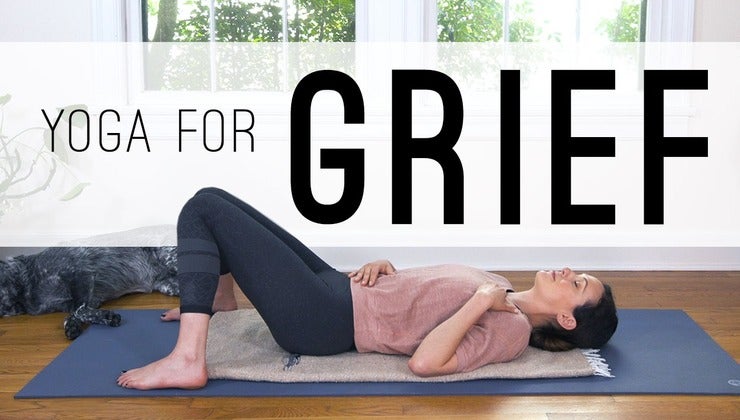 ellegirl.ru attend sports sections. I, with all my desire, simply physically cannot get out of bed. My stomach twists as if the Alien is about to burst out of me.
ellegirl.ru attend sports sections. I, with all my desire, simply physically cannot get out of bed. My stomach twists as if the Alien is about to burst out of me. Therefore, for almost the entire first day of my period, I lie in bed and drink painkillers, which somehow help me get through this hellish date on the calendar.
1 of 3
REEBOK yoga mat
I want one!
Thanks to the non-slip coating of the mat, you will be able to make any movements, and the mat will not rise from the floor, but will remain in the same position where it was at the beginning of the workout.
Advertising. Yandex LLC
2 out of 3
Yoga mat RamaYoga Dream Om
I want one!
Environmentally friendly, odorless, pleasant to the touch. The mat weighs less than a kilogram, it is resilient, hygienic, and provides good adhesion to the surface. Made from durable and lightweight PVC. The material is wear-resistant, easy to clean and has a long service life.
Made from durable and lightweight PVC. The material is wear-resistant, easy to clean and has a long service life.
Advertising. OOO "Yandex"
3 out of 3
Yoga mat ATEMI
I want one!
Environmentally friendly, odorless, pleasant to the touch. The mat weighs less than a kilogram, it is resilient, hygienic, and provides good adhesion to the surface. Made from durable and lightweight PVC. The material is wear-resistant, easy to clean and has a long service life.
Advertising. LLC "Yandex"
But constantly stuffing yourself with pills is not the best option. Experts are sure that it is much more useful to engage in physical activity. And not fitness in its usual sense, namely yoga and meditation. A set of three simple exercises will be especially effective.
Concentrate on doing them, overcoming the rush of pain, and soon you will feel relief.
- Photo
- Lifestock / Adobe Stock
Uttanasana
Stand up straight, gradually lower your body forward towards your feet, arching your back.



